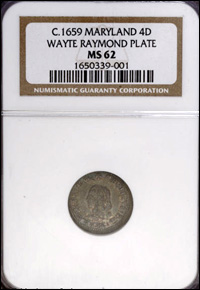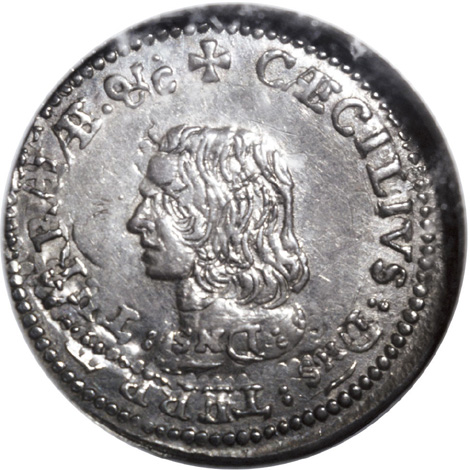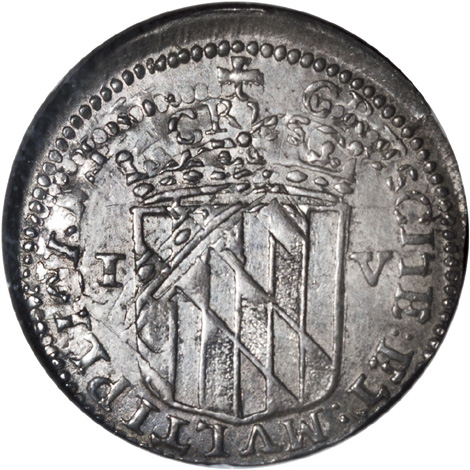
 Editor's Note: Here is the listing from the Heritage Galleries Auction:
Editor's Note: Here is the listing from the Heritage Galleries Auction:
(1659) 4PENCE Lord Baltimore Fourpence MS62 NGC. Breen-74. Large Bust and Shield. There are two different varieties of the Maryland Groat currently known, with either a large bust or a small bust as cataloged by Breen. The actual size of the bust is not that much different on either variety, but is different in relation to the lettering. This large bust variety, which is the more common, has the bottom curve of the bust nearly touching the lettering below. Most examples of this variety currently known are in low grades. Just two examples of the other variety with the bust distant from the lettering are currently known, according to Breen in his Complete Encyclopedia. We are currently aware of only three other comparable examples, from the Eliasberg, Garrett, and Roper collections. The comprehensive collection of John J. Ford, Jr., currently be auctioned by Stack's, did not include an example of this denomination.
Not only is this remarkable example important because of its condition, but also because it is fully double struck, with evidence clearly visible on both sides. The first strike was several degrees off center, and rotated with respect to the second strike. We cannot be certain whether this is the finest known Maryland Groat or not, but it is certainly well in the Condition Census. It is also important as the Wayte Raymond Plate Coin, per the NGC holder. The surfaces are smooth and satiny with rich grayish-silver color accented by peripheral iridescent toning. Cecil Calvert had his coins made in London sometime in 1659, and transported them to Maryland at the time they were produced. Different sources have placed the actual time of minting between 1658 and 1660. Older records suggest that his subsequent arrest was due to the appearance of his portrait on the coins, but it is now understood that his arrest was actually due to the production and exportation of his own coinage from Europe to colonial America.(#32)




